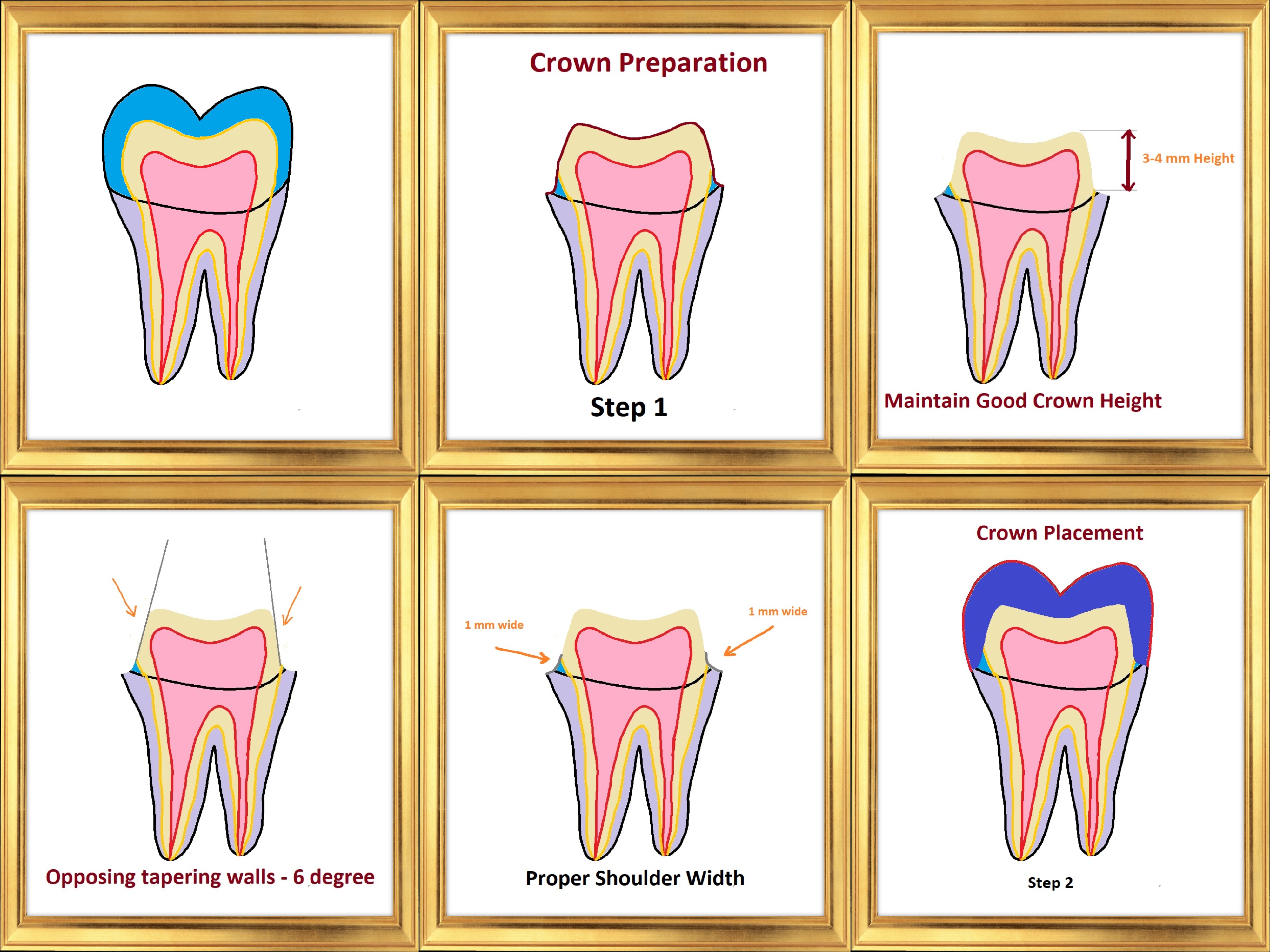1. Patient Assessment :-
The dentist examines the tooth to determine if it requires a crown. Common reasons for crown placement include extensive tooth decay, large fillings, fractures, or cosmetic purposes.
2. Numbing the Area :-
Before starting the procedure, the dentist administers local anesthesia to numb the tooth and surrounding tissues. This ensures that the patient feels little to no discomfort during the preparation.
3. Tooth Reduction :-
The dentist uses a dental handpiece (drill) to reshape the tooth. The amount of reduction depends on the specific case and the type of crown being used. The goal is to create adequate space for the crown while preserving as much healthy tooth structure as possible.
4. Impression Taking :-
After tooth preparation, the dentist takes an impression of the tooth and its neighboring teeth. This is done using dental putty or digital scanning techniques. The impression captures the precise dimensions and contours of the prepared tooth, which is crucial for the fabrication of a well-fitting crown.
5. Temporary Crown Placement :-
While the permanent crown is being fabricated in a dental laboratory (which usually takes a couple of weeks), a temporary crown is placed over the prepared tooth. This temporary crown protects the tooth, maintains its position, and provides aesthetic function until the final restoration is ready.
6. Shade Selection :-
If the crown is intended to match the color of the adjacent teeth, the dentist will also help the patient choose the appropriate shade for the crown. This ensures a natural appearance and a seamless blend with the surrounding teeth.
7. Crown Placement :-
Once the permanent crown is ready, the patient returns to the dental office. The temporary crown is removed, and the permanent crown is tried in to check the fit, aesthetics, and bite. Adjustments may be made if necessary. Once the final crown is deemed satisfactory, it is bonded or cemented onto the prepared tooth using dental adhesives.
8. Post-Placement Care :-
After crown placement, the dentist provides instructions on how to care for the crown and maintain good oral hygiene. Regular dental check-ups are recommended to monitor the crown's condition and ensure long-term success.
